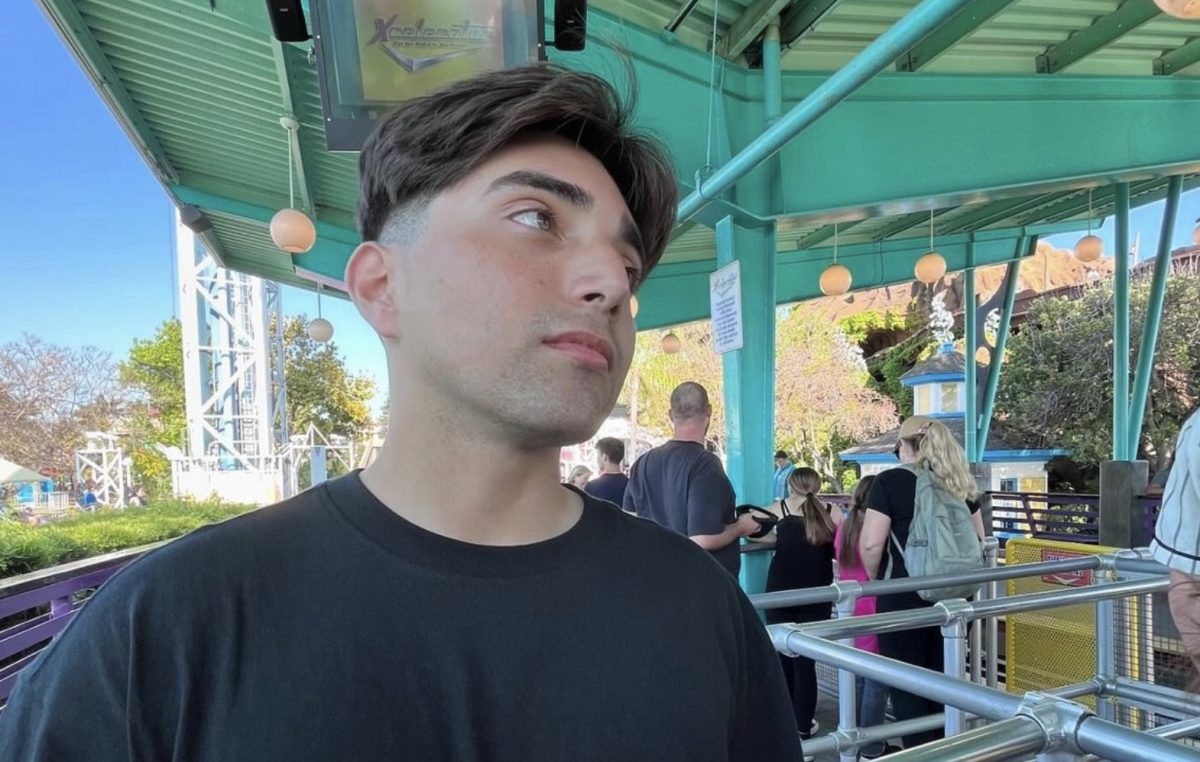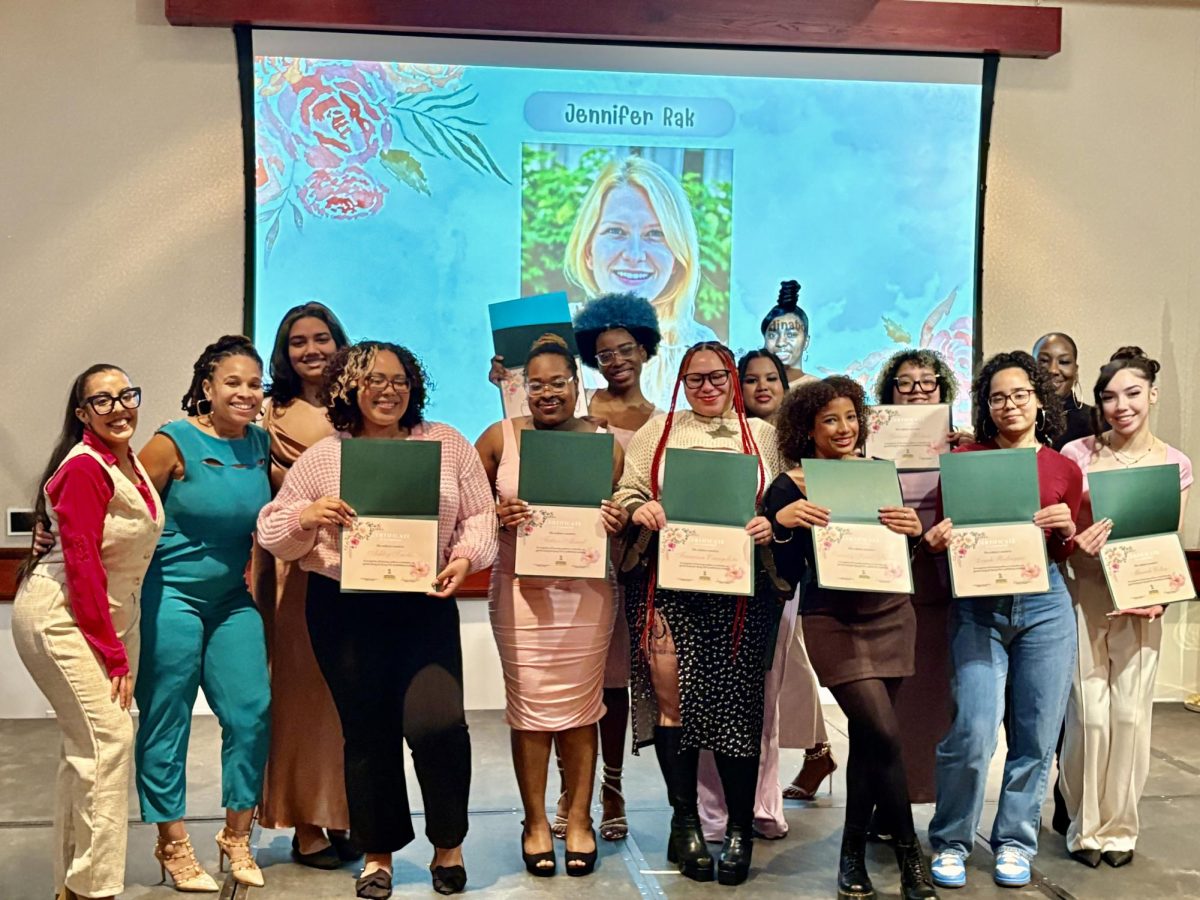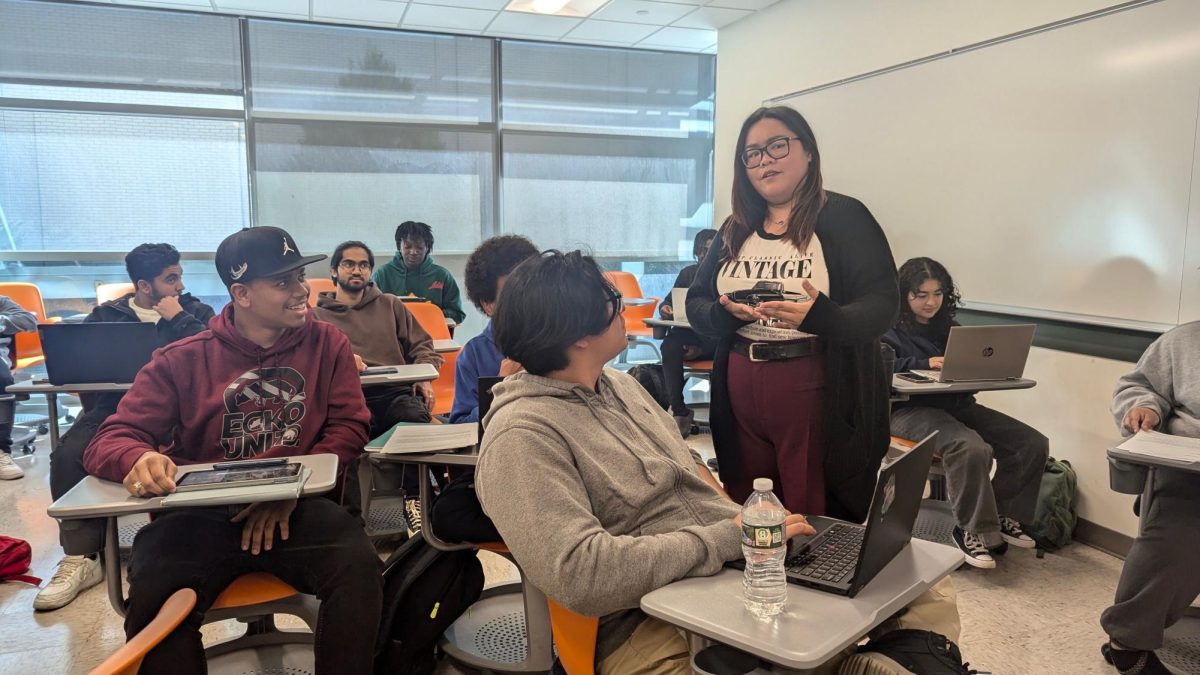By Atilla Azami —
11 A.M. November 3, the group gathered at the appointed rendezvous point in front of Grove St. Dunkin Donuts for a Campus Without Borders walking tour of Gay and Lesbian Greenwich Village, led by Dr. Tim White of our campus. Directly across from the descending entrance into Grove St. PATH station, Dr. White started his tour by presenting a map of Greenwich Village and introduced the very beginnings of the neighborhood’s history. The first point he touched upon was the relevance of the unique street layout that sets apart the area from the rest of Manhattan’s grid system of avenues and streets, and why it contributed to the concentration of gay settlement.
It’s a neighborhood in which the avenues cross avenues and streets intersect streets to form triangular and other odd polygonal shapes. It was a great way to segue into a quote from the film and stage show La Cage Aux Folles, “it’s a place to live life on an angle.”
After a brief PATH train ride to 9th St, the group emerged from the stop facing Lenny’s Sandwich Shop, formerly known as The Grapevine Café, a hangout spot for the gay community’s earliest champions. It was even visited by famous British writer Oscar Wilde. Dr. White explained the importance of the role that Oscar Wilde played in early gay acceptance, especially concerning, perhaps his most notable work, The Picture of Dorian Gray.
Dr. White then led the group down Washington Mews, an area directly north of Washington Square Park in which gay couples could enjoy peaceful residence in haylofts, shielded from the social policing of early 20th century America. The group then cut across Washington Square Park to MacDougal St., the Christopher St. of the 1920s, which was the stomping ground of the prolific lesbian writer Willa Cather. It also housed the Calypso Restaurant where the African-American gay writer James Baldwin worked as a waiter in the 1940s. There, he hung out with A-List, or the Gay-List, depending on who you speak to, such as celebrities like Marlon Brando.
The tour neared the end as the group crossed 6th Ave, the “least village-y,” part of the neighborhood, as it was colloquially dubbed by Dr. White for its modernly homogenous Manhattan corporate storefronts like Starbucks and Duane Reade. Ironically, the bridge between the least and the most gay sections, Christopher Street, is Gay Street, not named for its homosexual context but speculated to be named after the Gay family. Gay Street is one of the most sought after residencies of the entire Village for its quiet, traffic-free living within the city.
As the group walked onto Christopher from Gay Street, Dr. White pointed out the boutique which was formerly the Oscar Wilde Memorial Bookshop, a store that couldn’t compete in the age of Barnes and Nobles and the gentrification of the neighborhood. The tour’s terminus was at The Stonewall Inn, prudently selected by Dr. White to be the final point of interest not only for its geographical practicality, but also for its finale-worthy history. One of New York’s most famous gay bars, The Stonewall Inn was where the infamous Stonewall riot took place. It was an upheaval so heated that the sauced and indignant crowd uprooted a parking meter out of the sidewalk and used it as a battering ram to get to the raiding policemen inside the evacuated barroom.
Following a group picture in front of the notorious tavern, the tour concluded and everyone was lead to the nearest PATH station to cross the Hudson back into New Jersey. After it was all said and done, having Dr. Tim White as a knowledgeable and eagerly enthusiastic tour guide, one thing became clear: the only thing richer than Greenwich Village’s brownstone residents is its history.
Last walk tour for the fall semester is Friday, 11/18 to Times Square. This will conclude the series of walk tours until the spring semester.








